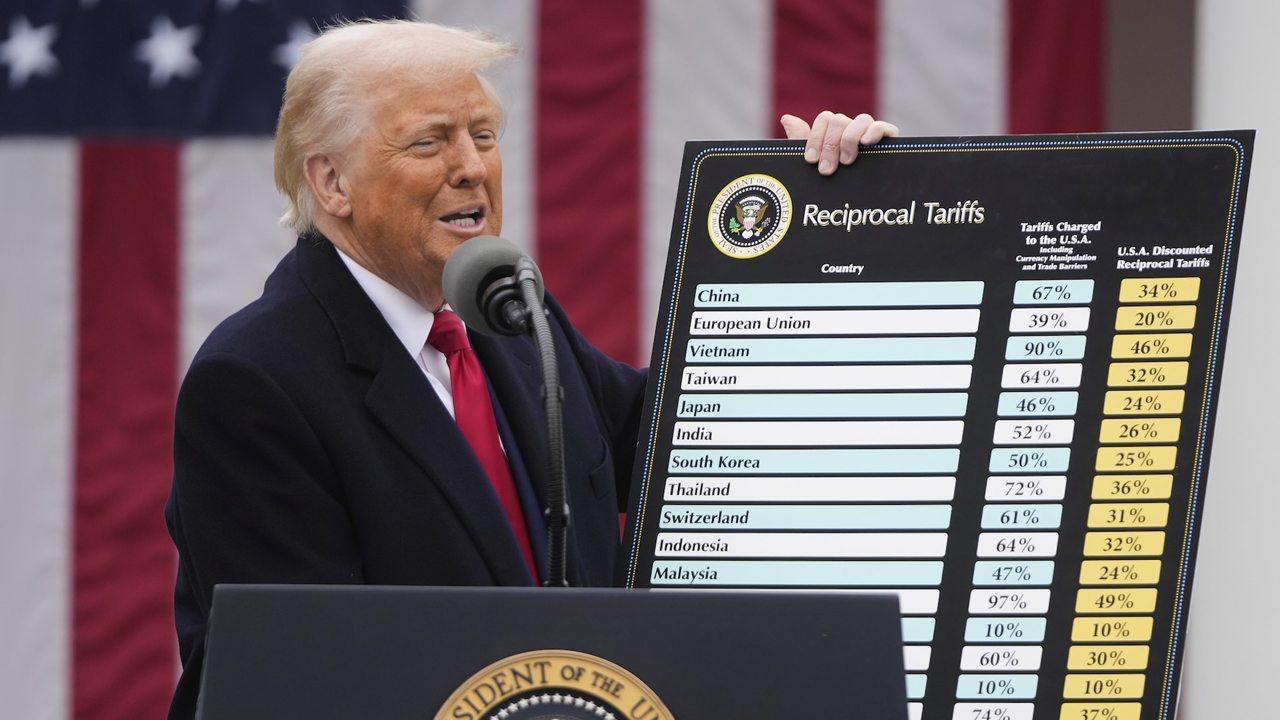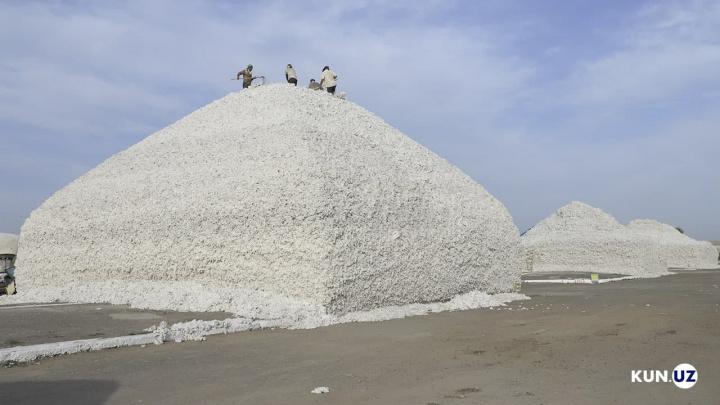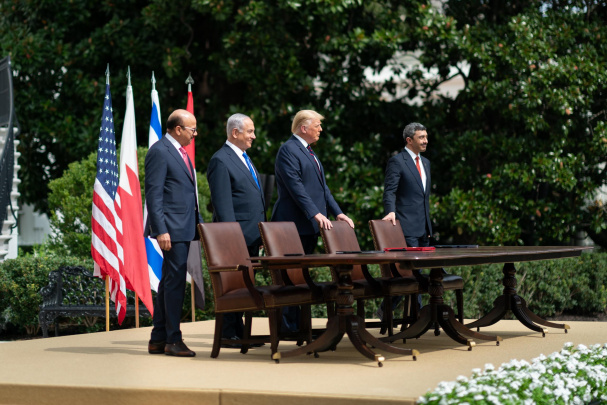Trump imposes 10% baseline tariff on all imports, raising economic uncertainty
On Wednesday, U.S. President Donald Trump announced the imposition of a 10% tariff on all goods imported into the United States from every country, including Uzbekistan. While some exceptions will be made, they will not involve tariff reductions but rather the imposition of even higher rates.

Photo: The White House
Analysts believe that this move will not help Trump achieve his goal of “bringing wealth back to America.” Instead, they warn that it could push the economy toward a recession.
Trump declared April 2 as a "Day of Freedom" for U.S. trade policy, marking the introduction of new tariffs in response to duties imposed on American products by other countries. Speaking in the White House garden, he announced a 10% tariff on all imported goods. According to The Wall Street Journal, Trump, unable to attach a chart to the wall due to strong winds, held it up in his hands and began reading aloud how much various countries taxed U.S. imports, followed by the retaliatory tariffs the U.S. was imposing in response.
Trump emphasized that the tariffs would be applied at a "discount" as a sign of goodwill. "We will impose roughly half of the tariffs they place on us. This means our tariffs will not be fully symmetrical. Of course, I could have made them completely equal, but that would have been a serious test for many countries. We don’t want that. This is a reciprocal measure implemented with goodwill," Reuters quoted Trump as saying.
For China, Trump imposed a 34% tariff — bringing the total rate to 54% when including two previous 10% increases. The European Union will face a 20% tariff, while Japan will see a 24% rate. Trump listed several dozen countries where the rates will be higher than 10%. These include:
- South Korea – 25%
- Switzerland – 31%
- Taiwan – 32%
- Malaysia – 24%
- India – 26%
- Indonesia – 32%
- Vietnam – 46%
- Venezuela – 15%
In total, about 60 countries will be affected.
For some nations — including the UK, Brazil, Singapore, Ukraine, Argentina, and the UAE — the tariff will remain at 10%.
The general import tariff will take effect on April 5, while the higher tariffs will be enforced starting April 9, the White House announced. Canada and Mexico, as close U.S. trade partners, will continue to be subject to the previously established 25% tariff, without any additional adjustments. Exemptions will also remain in place for goods covered under the North American trade agreement negotiated during Trump’s first term.
Notably, Russian goods will not be subject to the new tariffs due to the minimal trade volume between the two countries. However, the U.S. is preparing to impose additional tariffs on American buyers of Russian raw materials.
Additionally, a 25% tariff on all imported automobiles came into force on April 3, as previously announced.
Former U.S. Treasury Secretary Lawrence Summers compared Trump’s tariffs to the oil shock of the 1970s. He warned that, just as in that period, the new tariffs could lead to a decline in production capacity, rising inflation, increased unemployment, and reduced investment. Summers, now a professor at Harvard University, told Bloomberg that these were "very serious economic measures" with consequences for both international relations and national security.
Prior to Trump’s announcement, U.S. stock market indices had closed with slight gains. However, after the full scale of the trade war became clear, S&P 500 futures dropped by 2%, and Nasdaq 100 futures fell nearly 3%. Stocks of all major automakers—including Ford, General Motors, Stellantis, and Tesla—declined in after-hours trading. Shares of tech and consumer goods companies also fell: Nike dropped by 6%, Apple by 5%, and Amazon by 4%.
Within the first 20 minutes of trading, the U.S. stock market lost $2 trillion in value.
Trump’s economic adviser Peter Navarro, who previously advocated for import tariffs during Trump’s first term, stated on Sunday that the new tariffs are expected to generate $700 billion annually for the U.S. budget — $100 billion from automobiles and $600 billion from other goods.
This is a massive figure, according to Bloomberg columnist Justin Fox, a former editor of Harvard Business Review and author of The Myth of the Rational Market. It is nearly nine times higher than current U.S. customs revenue and amounts to 2.4% of the country’s GDP. Since the early 1870s, U.S. customs revenues have never exceeded 2% of GDP — and even then, it was a short-term spike. Since the 1820s–1830s, such levels have not been seen consistently.
Trump frequently references the high tariffs implemented by President William McKinley (1897–1901), but during McKinley’s tenure, tariffs accounted for only 1% of GDP.
Currently, imports make up a much larger share of the economy than they did in the 19th and early 20th centuries. However, Trump aims to reduce this share — if successful, it would limit the potential revenue from tariffs, Fox argues. Moreover, while high tariffs were standard in the 19th century, that is no longer the case in the 20th and 21st centuries.
"Suddenly raising tariffs to 19th-century levels will cause a massive economic shock, with unpredictable consequences," Fox warns.
Mary Lovely, a senior fellow at the Peterson Institute for International Economics, stated that the new measures "turned out to be much worse than expected."
According to Evercore ISI calculations, the weighted average tariff will now be 29% — even higher than the 20% rate seen in 1930, when the U.S. sharply increased tariffs as part of protectionist policies. Economists note that such measures only worsened the situation back then and prolonged the country’s recovery from the Great Depression.
The new tariffs will fuel inflation in the U.S., while retaliatory measures from other nations will deal an additional blow to the economy, believes Luca Paolini, chief strategist at Pictet Asset Management.
"Following this so-called ‘Day of Freedom,’ there will come a ‘Day of Retaliation.’ If countries do not respond, they will appear weak. Broad tariffs increase the likelihood of a U.S. recession," he said.
Related News

18:16
Uzbekistan in talks to import cotton from the U.S.

18:48 / 02.08.2025
Trump administration pushes Azerbaijan and Central Asia toward Abraham Accords, Uzbekistan’s Foreign Ministry responds

17:31 / 01.08.2025
Annual inflation slows in Uzbekistan despite utility tariff increases

17:19 / 30.07.2025



